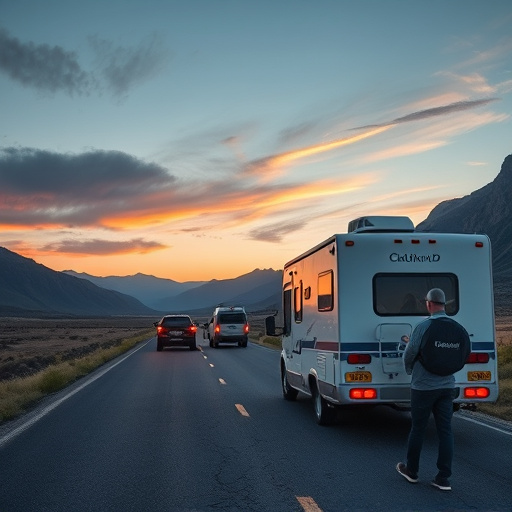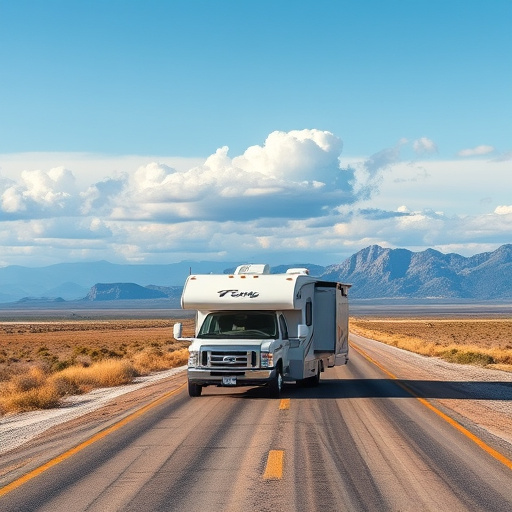For RVing beginners, navigating dump stations is crucial for a responsible and enjoyable camping experience. Understanding waste segregation, adhering to etiquette rules, and following proper procedures ensures environmental respect and maintains sanitation standards. Key practices include checking tank levels, maintaining safe distances, properly disposing of waste, securing valves, and respecting quiet hours. By mastering these skills, RV newcomers can contribute to clean campgrounds and enhance their overall RV lifestyle while preserving nature's beauty for future visitors.
For RVing newcomers, navigating dump stations can seem daunting. This guide breaks down essential etiquette rules for proper waste disposal, ensuring a seamless experience for all. From understanding dump station fundamentals to avoiding common mistakes, these tips are tailored for RVing beginners. Learn the key practices for efficient unloading and hygiene maintenance, empowering you to confidently manage your RV’s sanitation needs on the road.
- Understanding Dump Station Basics for RVing Newbies
- The Importance of Proper Waste Disposal Etiquette
- Key Rules to Follow When Using a Dump Station
- Common Mistakes to Avoid During Sanitation Stopovers
- Best Practices for Maintaining Hygiene and Cleanliness
- Tips for Efficient Navigation and Unloading at Dump Stations
Understanding Dump Station Basics for RVing Newbies

For RVing newbies, navigating dump stations is a crucial part of their journey. These facilities, designed specifically for disposing of waste from recreational vehicles, are essential to maintaining a clean and safe environment during camping trips. Understanding the basics starts with grasping that dump stations vary in size and amenities, ranging from simple composting toilets to full-service facilities with multiple stations. Learning the proper usage is key; this includes understanding what waste can be disposed of, such as grey water (from sinks) and black water (from toilets), and adhering to guidelines for solid waste disposal.
Newbies should also familiarize themselves with basic etiquette, like maintaining cleanliness while using the station, respecting other RV owners’ space, and being mindful of noise levels. Many dump stations have specific rules regarding time limits and vehicle weight capacity, so it’s crucial to read signs carefully before entering. By following these guidelines, RVing beginners can ensure a smooth experience at dump stations, promoting a positive and responsible RV lifestyle.
The Importance of Proper Waste Disposal Etiquette

Proper waste disposal etiquette is a crucial aspect of responsible RVing for beginners. When exploring nature’s beauty, it’s essential to respect the environment and minimize your impact. Dump stations are a convenient amenity provided at many campsites, offering a place to safely and hygienically dispose of wastewater from your RV. However, following the correct procedures ensures these resources remain functional and prevents potential sanitation issues from affecting other campers and local ecosystems.
For RVing novices, understanding the importance of dump station etiquette is key. Simply disposing of waste properly goes a long way in preserving the natural surroundings. By adhering to guidelines, such as using the appropriate containers for solid and liquid waste, you contribute to maintaining a clean and healthy camping environment. This practice ensures that sanitation systems function optimally, benefiting both current and future campers.
Key Rules to Follow When Using a Dump Station

When using a dump station, RVing for beginners should adhere to some key rules to ensure a smooth and eco-friendly experience. First and foremost, always check the tank levels before connecting your RV to the dump station. Make sure you know where all the valves and connections are located, so you can operate them efficiently. It’s also crucial to use the correct waste containers for different types of waste – never mix sewage with greywater or other fluids.
Another important rule is to respect others using the dump station at the same time. Keep a safe distance between your RV and others, allowing ample space for everyone to access their facilities without disruption. Remember to close all valves tightly after use to prevent any leaks or spills, and dispose of waste responsibly according to local regulations. These simple practices contribute significantly to maintaining sanitation standards while RVing.
Common Mistakes to Avoid During Sanitation Stopovers

When making sanitation stopovers while RVing, beginners and seasoned travelers alike can fall into some common traps. One of the biggest mistakes is not taking enough time to properly secure waste. This includes not fully closing dump station doors and valves, which can lead to spills and leaks, causing environmental hazards and cleaning headaches.
Another frequent error is overshining or under-shading. Using too much water while flushing can overload the system, while insufficient water might not adequately clean waste away. RVing for beginners should remember that dump stations are shared spaces; respecting others’ time by minimizing noise during use and keeping the area clean helps maintain a pleasant experience for everyone.
Best Practices for Maintaining Hygiene and Cleanliness

When RVing for beginners, understanding dump station etiquette is essential for maintaining hygiene and cleanliness. Start by utilizing the facilities thoroughly and properly. This includes cleaning all waste holding tanks before and after each use to prevent cross-contamination. Always dispose of waste responsibly, ensuring no fluids or solid matter escape into the environment. Regularly inspect and maintain your RV’s plumbing system to avoid any blockages or leaks that could lead to sanitation issues.
Respect other campers and the environment by adhering to quiet hours when using dump stations. Be mindful of the proximity of others’ vehicles and avoid causing disruptions. Additionally, take time to familiarize yourself with the local regulations and guidelines specific to each campground. Following these best practices not only ensures a pleasant RVing experience for beginners but also contributes to preserving the overall cleanliness and sustainability of outdoor spaces.
Tips for Efficient Navigation and Unloading at Dump Stations

Navigating a dump station can be a challenge, especially for RVing beginners. To make the process smoother, practice efficient navigation and unloading techniques. First, familiarize yourself with the layout of the station before backing your RV into the designated space. Ensure you have enough room to open all doors and access the holding tanks without obstruction.
Next, plan your unloading sequence. Start by disconnecting and emptying the fresh water tank, followed by the grey water tank, and then the black water tank. Use appropriate tools like dump valves and hoses to facilitate efficient unloading. Remember to dispose of waste responsibly and adhere to local regulations to avoid sanitation mishaps and ensure a pleasant RVing experience for all.
For RVing newcomers, mastering dump station etiquette is a crucial step in ensuring a safe and enjoyable journey. By adhering to these simple guidelines, from understanding basic procedures to common mistakes to avoid, novice RVers can confidently navigate sanitation stops, maintaining hygiene and respecting shared spaces. Remember, proper waste disposal methods not only protect the environment but also contribute to a peaceful camping experience for everyone. So, whether you’re planning your first RV adventure or seeking to enhance your skills, these dump station tips will empower you to become an expert in RVing basics.
